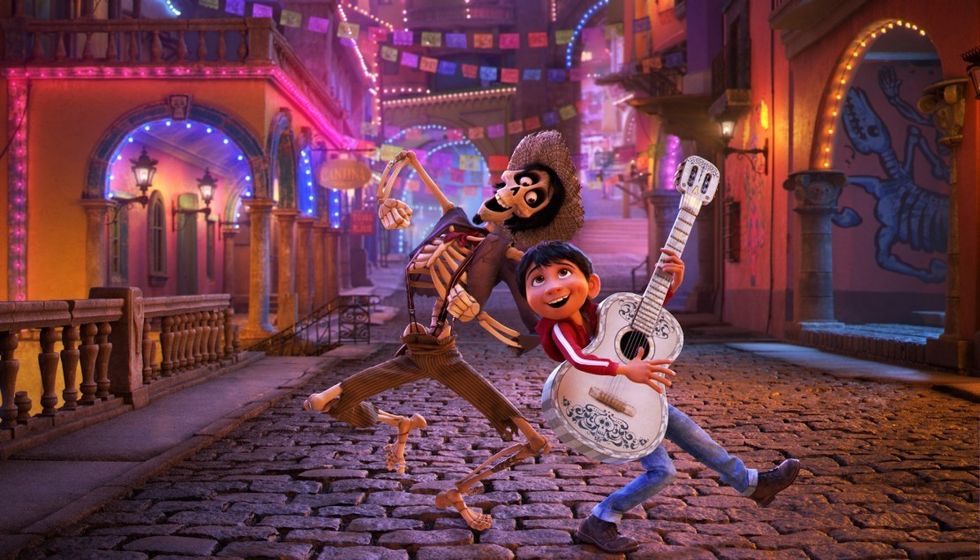5 Steps for Transforming an OK Story to a Great One from a Pixar Story Supervisor
Pixar’s Jason Katz reveals the what, why, and how of successful storytelling.

VR, AR, MR, & 360 video (collectively referred to as “XR” in the industry) are becoming increasingly more popular as storytelling tools largely due to an explosion in hardware and software innovations that make the production of those media affordable and accessible to the masses. No Film School was on hand at this year’s Augmented World Expo in San Jose to explore some of the recent innovations and see what tools and techniques are out there that could be helpful for filmmakers.
On the second day, expo visitors were treated to a keynote by Jason Katz of Pixar who began his address by asking the audience to leave everything they know about immersive technology “at the door” so that we could focus our attention on the most important part of storytelling: the story. During his speech, Katz outlined five basic principles that he adheres to when crafting stories and went on to discuss the simple elegance of the three-act structure that all Pixar films use to tell stories.
A story’s resolution is often the moment when the protagonist realizes that what they “need” is reflected in what they “wanted” all along.
1. Be patient
Good characters and stories take time and many revisions to craft. Katz shared that “All of us have 100,000 bad drawings in us” with the point being that we need to get through those “bad drawings” before we can start putting out the good stuff. It’s not unlike another sentiment that “Your first 10,000 photographs are your worst” and the message of both of these is that experimentation, trial, and learning what doesn’t work is the path toward creating the image, story, message that you do want, so don't rush that process.

2. Ask the questions in the right order
Katz said that while all stories have to address “who, what, where, why, when, and how”, the order in which storytellers answer those questions is important for creating an engaging flow and for keeping the viewer interested and vested in your characters.
Katz orders his answers to those questions as follows: who, when, where, what, why, how. According to him, the “who, when, where” is easy. That’s where you're establishing the setting for your story and identifying your main character. He goes on to say that answering the “what” is the thing that will drive your story. He calls it the “engine of your story” and one of the critical steps to answering the “what” question is asking two more: “what does your character want?” and “what does your character need?”
Katz added that a protagonist’s wants and needs are often mirrors of each other and that the story’s resolution is the moment when the protagonist realizes that what they “need” is reflected in what they “wanted” all along. An example he uses of this is the movie Up where the protagonist Karl wants to get his house to Paradise Falls in order to fulfill a lifelong dream he and his wife shared before her passing. However, what he needs is purpose and adventure. When he discovers a note in one of his wife’s albums thanking him for their life of adventure and encouraging him to go on a new one, he realizes that the adventure he went on had given him exactly what he needed and was everything he really wanted (but didn’t know he wanted).
Making the audience care about your protagonists and their journeys is essential for good storytelling.
The “why” and “how” are questions that relate mainly to character development, which is critical to do well if you want your audience to care about your protagonist, root for their success, and fear their failures.
”Why” is your character’s motivation. Katz referenced Finding Nemo and explained that, once the audience understands why Nemo’s father is so overprotective (Nemo’s mom and all of his siblings were eaten by an eel), we are able to understand his character and his father’s character more deeply, which allows us to be more invested in them and their story.
”How” can mean many things in character development. For example, it can mean “how are they challenged” along their journey. It can also mean “how have they changed” from their journey.

3. Make us care
Making the audience care about your protagonists and their journeys is essential for good storytelling. You want your audience to feel and you want them to be emotionally invested in your characters’ successes and failures. But how do you create characters the audience will care about? Katz suggests that, in addition to paying attention to the “what” and “why” questions above, rooting your characters in real experiences from your own life will inherently make those characters more three dimensional, interesting, and relatable.
4. Make sure your characters have meaningful changes
Whether or not a character’s change is meaningful or not depends greatly on how thoroughly you construct that character and how well you let the audience understand their motivations. Doing those things will help you create struggles and changes that are authentic to your character and that your audience will care about.
5. Take us on an emotional journey
Implementing these strategies and keeping your characters rooted in your own real-life experiences will help you create characters that your audience can relate to and that they’ll care about. Katz advised that if you’re able to make your audience care about your characters and the journeys they’re on, you will be able to bring your audience along for the emotional ride.

 No Film School's coverage of
No Film School's coverage of 









